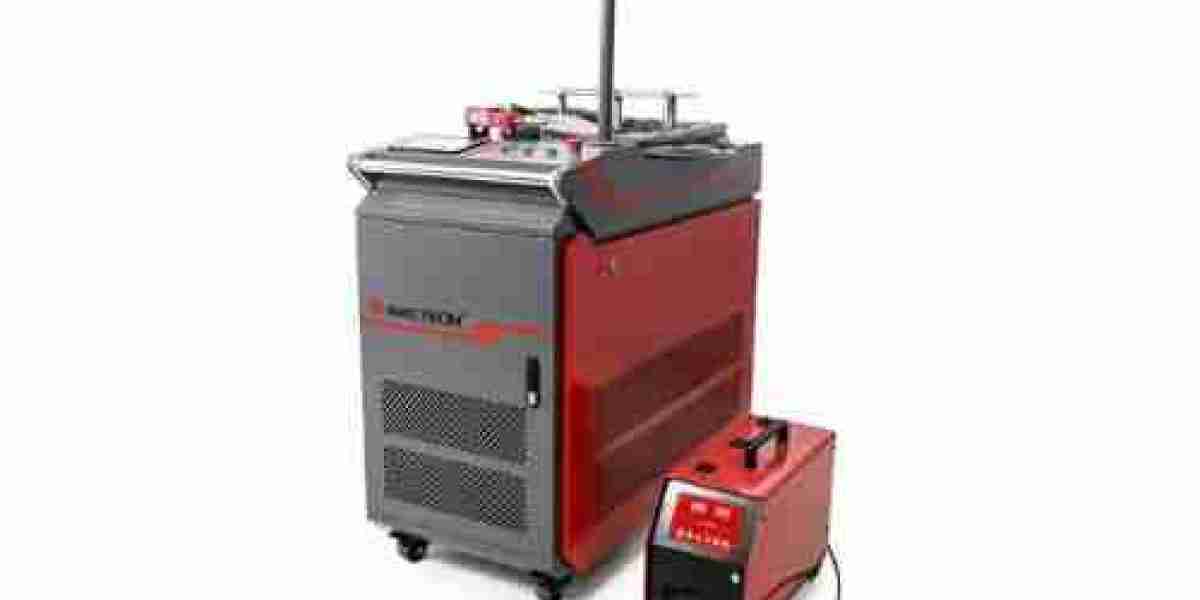To address this question comprehensively, we need to explore not only what this machine does but also how its operational framework aligns with current industrial demands. The inquiry isn’t merely about performance—it’s about adaptation, consistency under pressure, and compatibility with high-tech materials and lean production practices.
Understanding the Working Principle
The fiber laser welding machine utilizes a fiber laser source, which delivers a high-intensity laser beam focused onto a very small spot. This concentrated beam melts and fuses the materials along the joint line. Unlike conventional welding, the laser does not require filler materials, physical contact, or prolonged thermal cycles.
The machine operates on a non-contact principle, which significantly reduces contamination risks and mechanical stress. This is a central point for industries where precision and cleanliness are crucial—such as microelectronics or medical implants. The process offers control at the micron level, which is nearly impossible with arc or TIG welding.
Precision as an Industry Demand
Precision is not a luxury in modern manufacturing—it’s a fundamental requirement. Consider battery tab welding in electric vehicles or stainless steel components in surgical instruments. These applications require repeatable, controlled welds that do not compromise surrounding material. A fiber laser welding machine can maintain beam stability, depth control, and heat distribution across intricate geometries.
For instance, when welding dissimilar metals such as copper and aluminum—a common need in battery modules—traditional welding methods often struggle with conductivity differences and thermal expansion rates. Fiber laser technology, through pulsed or continuous wave modes, enables accurate energy delivery with minimal distortion. This level of control is rarely matched by traditional MIG or resistance welding techniques.
Material Compatibility and Industrial Versatility
A major limitation of conventional welding is material-specific compatibility. High-carbon steels, reflective metals, and thin sheets often pose difficulties. The fiber laser welding machine, on the other hand, handles a wider range of materials with varying reflectivity and thickness. Whether it's titanium alloys for aerospace components or galvanized steel in construction hardware, the fiber laser’s adaptability is evident.
This is particularly valuable in industries undergoing constant change in materials usage. For example, lightweighting trends in the automotive sector are pushing manufacturers to explore mixed-metal frameworks. The fiber laser's ability to weld stainless steel to aluminum with minimal spatter or cracking makes it a preferred choice in such transitions.
Enhanced Process Control and Automation Integration
Automation is the future of manufacturing. The real strength of a fiber laser welding machine lies in its integration capacity with robotic arms, CNC systems, and Industry 4.0 platforms. Real-time monitoring of weld parameters, auto-adjustment of beam intensity, and feedback-controlled seam tracking are features that align with smart factory setups.
More importantly, process repeatability is drastically improved with fiber lasers. In batch production runs, a machine operator can ensure that the 1000th weld is as precise as the first one. Consistency at this scale is difficult to maintain in manual or semi-automated traditional welding setups.
Reduced Heat Affected Zones (HAZ)
A key concern in welding is the heat-affected zone (HAZ), where material properties may degrade due to excess thermal input. Fiber laser welding offers deep penetration with minimal peripheral heating. This is especially important in thin-walled components or heat-sensitive metals, where structural integrity is paramount.
Take electronics enclosures or sensor housings as examples—any distortion or microcrack in the weld line could compromise functionality. With a fiber laser welding machine, the focused beam ensures only the target zone is affected, preserving adjacent surfaces and maintaining product reliability.
Cleanroom Compatibility and Minimal Post-Processing
Fiber laser systems operate in clean environments with minimum fume generation and slag formation. Traditional methods, such as arc or stick welding, produce fumes, spatter, and require additional surface cleaning or grinding. In contrast, laser-welded joints often require no further machining or polishing, reducing both labor time and production cost.
Industries such as medical device manufacturing and semiconductor assembly require sterilizable and particulate-free joining. The fiber laser welding machine is naturally suited for these tasks due to its non-contact, clean operation mode. Even in stainless-steel surgical tools, the welds are aesthetically uniform, free from oxidation and residue.
Cost Justification through Long-Term Value
At first glance, investing in a fiber laser welding machine may appear costly, particularly for small to mid-scale manufacturers. However, when evaluated through the lens of throughput, scrap reduction, energy efficiency, and reduced manpower, the long-term return becomes clearer.
For example, the lifespan of a fiber laser module can exceed 100,000 operational hours with minimal maintenance. There are no electrodes to replace, no consumables like flux or shielding gas (in many configurations), and no tool wear affecting output consistency.
Additionally, fiber lasers operate at higher wall-plug efficiency compared to older laser types like CO₂. That translates into lower energy bills, better thermal stability, and reduced cooling requirements—all contributing to lower total cost of ownership.
Precision Welding in Emerging Markets
As global manufacturing becomes more complex and standards more rigorous, the demand for advanced welding techniques is extending beyond established industrial giants. Countries investing in defense, renewable energy, and electronics are turning to solutions like the fiber laser welding machine to elevate their manufacturing infrastructure.
In electric vehicle production alone, battery casings, cooling plates, and tab connections all require the kind of reliability and finesse that fiber laser systems deliver. Similarly, in solar panel assembly, thin metallic frames and reflective back sheets are ideal candidates for laser-based joining due to their sensitivity and size.
Training and Workforce Shift
The shift from traditional welding to laser-based systems is not just technological—it also involves workforce adaptation. A fiber laser welding machine reduces dependency on highly skilled manual welders. Instead, the focus moves toward operating digital interfaces, setting beam parameters, and maintaining automation workflows.
Training programs are now incorporating laser welding fundamentals into technical curriculums, preparing the next generation of workers to handle more sophisticated tools. This shift increases workplace safety, improves weld quality, and aligns with broader digital transformation goals.
Final Thoughts
So, can a fiber laser welding machine truly replace traditional methods in high-precision metal industries?
The answer lies not in elimination, but in evolution. Traditional methods will always have a place for heavy structural welding, field repairs, or cost-sensitive applications. However, for industries demanding microscopic accuracy, minimal distortion, and integration with intelligent manufacturing systems, fiber laser welding is not just an alternative—it’s becoming the new standard.
Its ability to deliver clean, repeatable, and strong joints across various materials, along with seamless compatibility with automated environments, makes it a future-proof investment. As production lines become smarter and products become more intricate, the fiber laser welding machine will continue to prove its worth—not just as a tool, but as a core enabler of modern precision engineering.




